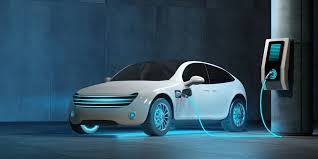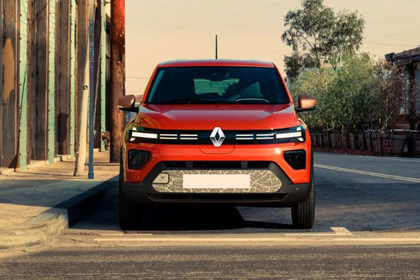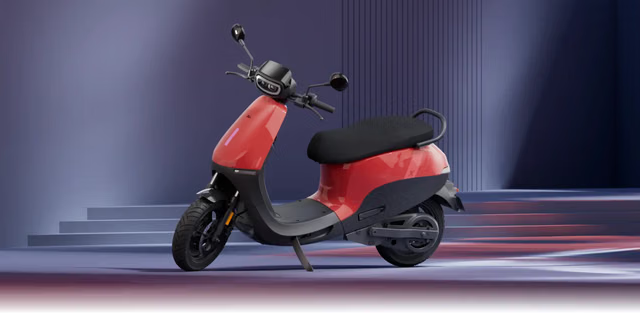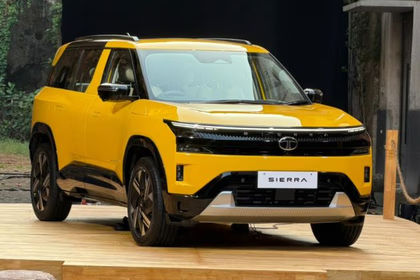Introduction
The take-up of electric vehicle (EVs) is growing and accelerating in every corner of the world, and India is no different. Increasing environmental consciousness, government benefits, and emerging battery technology have caused EVs to be an attractive option for both urban commuters and highway cruisers. Yet, the fact that EVs are more expensive than conventional ICE vehicles up-front can prove to be a limitation for most consumers. This is where funding comes into play, making it easier and affordable to own an EV. The selection of the right loan ensures repayment within monthly affordability while maximizing subsidies, incentives, and low-interest rates. The right EV loan can greatly improve ownership and long-term budgeting.
Brief Overview of EV Adoption in India and Globally
- International Growth – EV sales globally exceeded 14 million units in 2024, reflecting growing consumer acceptance.
- Expansion of Indian Market – India’s EV sales are increasing at a 30–40% CAGR, driven by electric scooters, two-wheelers, and passenger EVs.
- Government Support – Subsidies under FAME II and state-level incentives are pushing EV adoption.
- Tech Improvements – Longer battery life, quicker charging, and growing charging infrastructure are making EVs more convenient.
The Role of Financing in Making EV Ownership Accessible
- Reduces Upfront Cost – Loans enable buyers to buy EVs without full payment up front.
- Flexible Repayment Options – Monthly EMIs over a convenient tenure make ownership affordable.
- Enables Upgrading – Financing enables consumers to opt for higher-spec EVs or longer-range models.
- Incentive Integration – Several banks and NBFCs provide unique EV loan rates, combining government incentives for cost savings.
Significance of Opting for the Proper Loan to Optimize Cost and Convenience
- Rate of Interest Impact – Lower rates minimize overall loan cost and EMI burden.
- Optimal Tenure – Selecting the proper tenure optimizes monthly affordability against total interest paid.
- Avoid Hidden Costs – Carefully reviewing processing fees, prepayment charges, and other hidden costs prevents financial surprises.
- EMI Flexibility – Flexible repayment options ensure financial comfort without disrupting personal budgets.
- Maximizing Incentives – A well-chosen loan allows full utilization of government subsidies and lender offers.
Tip 1: Compare Interest Rates
The most critical aspect while selecting an EV loan is the rate of interest, as it has a direct bearing on your monthly EMI as well as the final cost of the car. Interest rates are quite different from one bank to another, from an NBFC, and from a fintech player, and can also be different depending upon the loan tenor or your credit history. Knowing the distinction between fixed and floating rates, assessing the impact on repayment, and verifying special EV-specific financing deals are steps to help you pick the least expensive loan.
Fixed vs Floating Interest Rates
- Fixed Interest Rate – The interest rate doesn’t change over the loan period, giving stable EMIs and simpler budgeting.
- Floating Interest Rate – It varies based on market trends, leading to decreased or increased EMIs in the future.
- Pros & Cons – Fixed rate provides certainty, while floating rate is less expensive if market rates decrease.
- Decision Factor – Analyze tenure, market direction, and risk appetite before opting for fixed or floating rates.
How Interest Rates Impact Monthly EMIs and Overall Cost
- More Rates = More EMIs – A 0.5–1% difference in rate makes a big difference in monthly repayments.
- Total Cost of Loan – The more interest charged, the more is paid over the time period.
- Calculation of EMI – EMIs are a function of principal, repayment period, and rate of interest; small differences accumulate over the years.
- Useful Tip – Contrast EMI calculators by various lenders to approximate the actual repayment load.
Verification of Special EV Finance Rates by Banks and NBFCs
- Govt Tie-Ups – A few banks provide reduced EV loan rates under programs such as FAME II or state incentives for EVs.
- Electric Vehicle-Specific Loans – NBFCs and fintech providers usually offer lower interest or cashback on electric vehicles.
- Document Benefits – A few lenders do away with processing charges or lessen documentation for EV loans.
- Promotional Deals – Be on the lookout for holiday or seasonal promotions featuring short-term interest rate cuts.
Tip 2: Look at Loan Tenure Options
Selecting the appropriate loan tenure is essential while availing finance for an electric car. The tenure decides the duration for which you will pay EMIs as well as the amount of interest paid over the loan period. Though longer tenures lead to lower monthly EMIs, they can result in higher costs in terms of interest payments. On the other hand, lower tenures result in higher EMIs but less interest payments overall. For consumers of EVs, battery life, depreciation, and resale value also need to be taken into account when choosing tenure. Prepayment flexibility can help to bring financial relief and lower interest burden in case of a change in circumstances.
Short-Term vs Long-Term Loans and Effect on EMI and Total Interest
- Short-Term Loans – Usually 1–3 years; high EMIs but less total interest paid.
- Long-Term Loans – 4–7 years; lower monthly EMIs but more total interest.
- Cost-Benefit Analysis – Longer tenure can relieve the monthly budget but adds up to more cost.
- EMI Planning – Weigh affordability and overall interest to reach the sweet spot.
Optimal Tenure for EV Buyers Accounting for Battery Life and Resale
- Battery Guarantee Consideration – Match loan tenure with battery guarantee period (typically 5–8 years) to avoid loan repayment as battery health reduces.
- Depreciation Factor – Shorter tenure assists in selling or upgrading EV without having an existing loan.
- Resale Strategy – Tenure should terminate before significant battery replacement expenses.
- Practical Choice – 3–5 years works best in terms of balancing EMI affordability and retention of vehicle value.
Prepayment Flexibility
- Partial Prepayment – Enables you to prepay a lump sum to cut down principal and interest.
- Full Prepayment – Repays the loan in advance, cutting down substantial interest expenses.
- Check Penalties – Some lenders impose penalties for prepayment; check before the loan is signed.
- Financial Planning Benefit – Flexible prepayment enables the flexibility to pay according to shifting income or financial objectives.
Tip 3: Check Processing Fees and Hidden Charges
When availing an EV loan, it’s imperative to take into account all the extra fees other than the rate of interest. Banks and NBFCs tend to charge fees like processing fees, documentation fees, and even prepayment fees that add up a lot over the loan period. Going through the terms in detail prevents any unwanted surprises and ensures the loan is affordable. Also, most lenders would be willing to negotiate some of the fees, further lowering the total cost of your EV loan.
Typical Fees: Processing Fee, Documentation Charges, Prepayment Penalty
- Processing Fee – Usually 0.5–2% of the amount borrowed, for loan sanctioning and paperwork management.
- Documentation Charges – Charges for verifying, stamping, or giving sanction letters; it depends on the lender.
- Prepayment Penalty – A charge for paying back early; 1–3% of outstanding principal varies.
- Effect on Cost of Loan – Hidden charges can hugely increase the overall cost of the loan if not covered at the beginning.
Why It Matters to Read the Fine Print to Not Be Surprised
- Complete Understanding – Know precisely what charges apply and when they are applied.
- Shun Hidden Expenses – Banks/Lenders can charge service fees, late payment charges, or mandate insurance premiums.
- Clarity – Terms read to ensure EMIs and costs are properly estimated.
- Informed Choice – Facilitates comparison of different lenders on a cost basis, not interest rate alone.
Bargaining Fees with Banks or Lenders
- Ask Waivers – Most banks are open to waiving or lowering processing/documentation fees in the case of high-value EV loans.
- Compare Offers – Negotiate with terms by using quotes from various lenders.
- Utilize Promotions – Festive or seasonal promotions might come with fee waivers or cashback rewards.
- Establish Relationship – Customers who have long-term relationships with a bank or have good credit scores tend to have superior negotiating leverage.
Tip 4: Evaluate Subsidy or Incentive Benefits
Among the most significant benefits of buying an electric car is the availability of government subsidies and incentives, which can cut the cost of ownership to a large extent. Central as well as state governments provide a range of schemes that reduce the purchase price, registration cost, and even financing charges at times. Moreover, certain banks and NBFCs collaborate with government initiatives or implement special offers that offer reduced interest rates, cash back, or other rewards for EV loans. Awareness and application of these incentives can render an EV loan significantly cheaper and decrease the economic burden within the repayment tenure.
Government Subsidies (Central/State) for EV Loans
- FAME II Scheme – Offers direct subsidies for electric two-wheelers, three-wheelers, and passenger EVs in India. State-Level Incentives – Maharashtra, Delhi, and Karnataka states provide extra subsidies, waiver of registration fees, and road tax exemption.
- Battery & Vehicle Subsidy – Minimizes upfront cost, particularly for higher capacity battery EVs.
- Eligibility Criteria – Subsidies generally hinge on vehicle type, battery capacity, and the income category of the buyer.
Lender Tie-Ups with Lower Rates or Cashback for EVs
- Reduced Interest Rate for EVs – Banks and NBFCs can offer lower interest rates for EVs as a tie-up with government schemes.
- Cashback Offer – Certain lenders offer direct cashback or EMI rebates on the purchase of electric vehicles.
- Fintech Tie-ups – Some fintech platforms tie up EV loans with subsidies for quicker approval and reduced effective cost.
- Seasonal or Festival Promotional Benefits – Waiver of processing fees or interest concessions is usually a part of seasonal or festive promotions.
How Incentives Impact Loan Affordability
- Reduction in Principal – Subsidies lower the amount financed, which directly results in lower EMIs.
- Saving on Interest – Special EV loan rates and subsidies reduce total interest paid during tenure.
- Improved EMI Handling – Lower financial burden makes longer tenure loans easier.
- Enhanced ROI – Incentives maximize value for money and reduce break-even period on EV investments.
Tip 5: Assess Your Credit Score
Your credit score is among the most important factors that lenders use to approve an EV loan. The higher your credit score, the more likely you are to get your loan approved, and you’ll also be eligible for lower interest rates and favourable loan terms. On the other hand, a poor credit score can lead to higher EMIs, smaller loan amounts, or even rejection of your loan request. Knowing your credit profile, checking your credit profile before applying, and having a good credit history can greatly simplify the loan process and reduce the cost of financing your electric vehicle.
How Credit Score Affects Interest Rate Eligibility
- Higher Credit Score – Usually, a score of 750+ allows for lower interest rates and better loan terms.
- Low Credit Score – Scores lower than 650 can attract higher rates of interest or even demand a co-applicant.
- Loan Sanction Probability – Improved scores improve prospects for prompt sanctioning and easy loan term flexibility.
- EMI Savings – Lower interest rates on high scores decrease EMIs per month and total interest by a great extent.
Tips to Improve Credit Score Before Applying
- On-Time Payments – Regularly pay current EMIs, credit card payments, and bills promptly.
- Minimum Credit Card Use – Maintain outstanding amounts at 30–40% or lower of your available credit.
- Dispute Errors – Monitor your credit report and dispute errors regularly.
- No Multiple Loan Requests – Avoid multiple loan requests within a short duration since numerous credit checks might drop your score.
Role of Credit History in Quick Loan Approvals
- Records of Past Loan Payments – Good history speaks volumes about dependability and expedites clearance.
- Stability Counts – Longstanding good credit behavior is favored over high activity over brief periods.
- Current Bank Relationships – Previous accounts or loans from the same bank may expedite processing.
- Ease of Documentation – Excellent credit history tends to eliminate the need for extra collateral or authentication.
Tip 6: Understand EMI Flexibility
You must understand EMI flexibility while selecting an EV loan since it impacts your monthly cash outflow and general financial well-being. Most lenders provide several EMI alternatives, such as monthly, quarterly, or balloon payment, so that you can customize repayment according to your income cycle. Opting for an appropriate EMI scheme ensures that repayment is comfortable without overburdening your finances. It is also involved in long-term financial planning, making you minimize interest expenses and avoid default while making EV ownership hassle-free and easy.
EMI Payment Options (Monthly, Quarterly, Balloon Payments)
- Monthly EMIs – Default choice; stretches repayment over the entire loan period.
- Quarterly EMIs – Every three months’ payment; helpful for irregular income sources.
- Balloon Payments – Lower EMIs at first with one big final payment; less short-term financial pressure.
- Combination Plans – A few lenders permit hybrid EMI plans to balance monthly cost and overall interest.
Selecting Flexible EMIs That Coincide With Income Cycles
- Salaried Individuals – Monthly EMIs that sync with salary cycles are convenient and eliminate late charges.
- Business Owners/Freelancers – Quarterly or season-based EMIs might be more in sync with cash flows.
- Seasonal Adjustments – Temporary reduction or deferment of EMI in low-income months is permitted by some lenders.
- Budget-Friendly Planning – Flexible EMIs avoid compromising essential expenditures when repaying the loan.
Effect of EMI Structure on Overall Financial Planning
- Cash Flow Management – Flexible EMIs avoid overwhelming monthly finances.
- Interest Savings – Shorter tenures of EMI or structured repayments can save total interest.
- Financial Discipline – Stable EMIs facilitate planning other investments and expenditures.
- Debt-to-Income Ratio – Properly structured EMI avoids borrowing beyond sustainable levels, supporting future loan eligibility.
Tip 7: Compare Lenders and Read Reviews
Selecting a lender is as critical as choosing the terms of the loan. Banks, NBFCs, and fintech websites all provide EV financing but vary in interest rates, processing time, and customer support. Comparing several lenders, reading reviews, and testing service quality can save you from unknown problems and provide you with a hassle-free loan experience. Transparency in terms and rapid approval procedures are major factors that make it easy to borrow, minimize stress, and enable you to utilize government subsidies or limited EV loan promotions without hesitation.
Banks vs NBFCs vs Fintech Platforms for EV Loans
- Banks – Provide competitive interest rates and established credentials; might have delayed processing times.
- NBFCs – Relaxed approval norms, usually quicker processing, and special EV schemes; marginally higher interest rates than banks.
- Fintech Platforms – Fast online approvals, less paperwork, and instant pre-approval facilities; rates can be variable depending on tie-ups.
- Comparison Tip – Look at overall cost (interest + charges) instead of interest rates alone to make a well-informed decision.
Verifying Customer Reviews, Service Quality, and After-Sales Support
- Customer Feedback – Examine previous borrowers’ history on EMI collection, delays, and transparency.
- Service Quality – Assess lender support for inquiries, prepay requests, and document management.
- After-Sales Support – Certain lenders help with subsidy processing and insurance tie-ups for EV buyers.
- Red Flags – Complaints regarding hidden charges, delayed disbursal, or poor communication point to red flags.
Importance of Transparency and Quick Approval
- Transparent Terms – Open loan contracts avoid surprises regarding interest rates, charges, or penalties.
- Speedy Disbursal – Fast approvals enable you to avail EV subsidies and promotional offers promptly.
- Simplified Documentation – A Short and simple process by lenders avoids delays and paperwork complexities.
- Hassle-Free Experience – Transparency and speed enable a hassle-free journey to EV ownership without financial issues.
Conclusion
Selecting the right loan is an essential step in making electric vehicle ownership convenient and affordable. Through a careful evaluation of interest rates, loan term, processing charges, subsidies, credit score, EMI flexibility, and loan provider options, buyers can come down considerably on their expenditure burden and have a seamless experience of repayment. Careful budgeting makes EV ownership not only a green option for the planet but also a savvy move for your bottom line. Taking a few minutes to shop for loans, check reviews, and take advantage of government or lender incentives can assist you in getting the most favorable terms and making the switch to electric transportation hassle-free.
Compare Interest Rates – Lower interest rates lower EMIs and overall loan cost.
- Loan Tenure Options – Strikes a balance between monthly affordability and overall interest paid.
- Processing Fees & Hidden Charges – Don’t get surprised or pay extra.
- Evaluate Subsidy & Incentives – Lower principal and enhance affordability.
- Credit Score Evaluation – Better scores get lower rates and quicker approval.
- EMI Flexibility Understanding – Select payment frequencies aligned with your income cycle.
- Compare Lenders & Reviews – Check for transparency, speedy approval, and good service.
Incentive to Plan Finances Wisely to Own an EV
- Plan Wisely – Consider EMIs, insurance, and maintenance while planning finances.
- Take Advantage of Incentives – Utilize government and bank programs to lighten the expense load.
- Plan for the Future – Match loan term with private budgetary objectives and vehicle usage.
Call-to-Action: Compare Loans and Benefit from Subsidies
- Compare Banks – Compare several banks, NBFCs, and fintech platforms for the most favorable terms.
- Subsidy Action – Apply in advance to get the most out of government and state subsidies.
- Read Terms Carefully – Be open about fees, interest rates, and payment terms.
- Secure Your EV Loan – Make owning an EV cost-effective, convenient, and worry-free.
FAQs
- Can I obtain a lower interest rate for an EV loan compared to a regular car loan?
Yes. Several banks and NBFCs provide special EV loan rates that are lower than comparable car loan interest rates, usually in association with government subsidy programs.
- Is there a special loan scheme for electric scooters in India?
Yes. Some lenders also offer special EV loan plans for two-wheelers and scooters with lower interest rates, lower processing fees, and flexible tenures to promote adoption.
- What is the longest tenure for EV loans?
The longest tenure usually varies between 5 and 7 years, depending on the lender as well as the nature of the EV, although shorter tenures will reduce the total interest paid.
- How do subsidies influence the EMI of an EV loan?
Government or state subsidies decrease the principal loan amount, which automatically decreases EMIs and reduces the overall interest over the term of the loan, thereby making EV ownership more convenient.
- Is prepaying my EV loan allowed without penalty?
It varies with the lender. Partial or full prepayment without penalty is allowed by some banks and NBFCs, while others may have a small penalty. Always read the loan agreement before applying.





